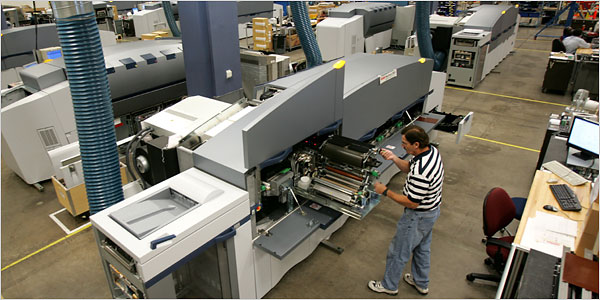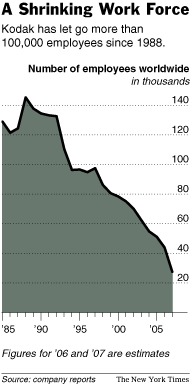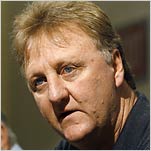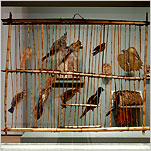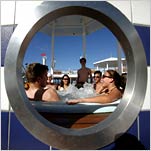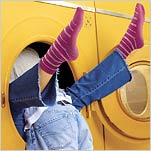On Tuesday, as the Eastman Kodak Company unveiled its long-anticipated consumer inkjet printer in New York, the mood at the company’s Rochester headquarters could not have been more positive.
“People know we are back on the offensive,” said Frank Sklarsky, Kodak’s chief financial officer. “And that’s making them a lot more charged up about coming to work.”
But yesterday, Kodak gave them reason again to feel depressed. The company said it would cut 3,000 more jobs this year, on top of the 25,000 to 27,000 it had already said would be gone by the end of 2007. At that rate, Kodak will end the year with about 30,000 employees, half the number of just three years ago and a fraction of the 145,000 people it employed in 1988, when its brand was synonymous with photography.
Kodak executives insist that the new cuts do not indicate any snags in the continuing struggle to transform itself from a film-based company into a major competitor in digital imagery. And analysts, too, say the cuts are inevitable, and probably healthy.
“Kodak finally has the right products for the digital market,” said Jack L. Kelly, an analyst at Goldman Sachs. “But given the competitive nature of the digital world versus the film world, the real question is still how much profit can they wring from the digital portfolio.” The new wave of job cuts, Kodak executives said, are a side effect of the sale of Kodak’s health imaging business last month. The sale will bring in more than $2.2 billion, but the unit was one of Kodak’s most profitable, contributing $157 million to earnings last year. The unit also picked up some of the costs of human resources, finance and other support services.
“When a big business is no longer available to absorb its share of the accounting department, of me, of the chief executive, it ends up as an overhang that could depress profits,” Mr. Sklarsky said.
The job cuts are coming at a high price. Kodak has taken $2.7 billion in charges related to the 23,400 jobs it has already cut. With the new job cuts, those charges could be as high as $3.8 billion.
Some investors insist the payback will be worth the price. Ulysses Yannas, a broker at Buckman, Buckman & Reid who continues to buy Kodak shares for himself and his clients, insisted that Kodak would be at the right employment level for the $10 billion to $10.4 billion in revenue it expects this year. “I’ve always said their sales per employee should exceed $300,000, and finally they will,” he said.
Kodak executives, many of whom turned up for a meeting with analysts in New York yesterday, rushed to put a positive spin on the continuing transformation. They said that Kodak will earn $200 million to $300 million from its growing portfolio of digital products in 2007. Last year, it earned $343 million, but that included the health care unit.
They said they expect to reap $250 million in royalties and other revenues from their intellectual property. And they said that Kodak’s growing commercial printing business, which has been struggling to digest four large acquisitions, is finally through its integration pains. The group earned $141 million on revenues of $3.6 billion last year — a welcome change from its flat earnings in 2005 and losses in 2004.
And, of course, there is the new inkjet printer. With that product, Kodak has effectively turned the printing industry business model on its head. Companies like Hewlett-Packard, Epson and Canon have long sold printers at rock-bottom prices, content to make the money back on ink cartridges. Kodak’s printers, which will go on sale at Best Buy in March, will sell for $149 to $300 — at least $50 more than comparable models. But it will sell cartridges for $10 for black ink and $15 for color ink, about half the price of competitive products.
“I think they will get heavy traction with this printer, as consumers realize that it will pay for itself in a year,” Mr. Yannas said.
Analysts are hard to persuade, though. According to Thomson Financial, five of the eight analysts who follow Kodak are telling clients to sell the shares, and the other three rate it a hold.
Several note that Antonio Perez, Kodak’s chief executive, and several of his executives spent much of their pre-Kodak days at Hewlett-Packard and thus are not digital novices. Still, they question Kodak’s prospects.
“They are not fools, they are going after the sweet spot of the market, the people who print a huge number of photos at home.’’ said Matt Troy, an analyst with Citigroup Investment Research who has maintained a sell rating on Kodak for three years. “But they are up against big companies that can give a haircut to their own prices if they want.”
Kodak is also up against consumer resistance to paying now to save later. “When it comes to printers, consumers look for the features they want, then find the least expensive device that offers them,” said Ron Glaz, director of digital imaging programs at the market research firm IDC. “It is only later that they get sticker shock, when they’re spending $50 for ink.”
Tuan Tran, vice president for imaging and printing supplies at Hewlett-Packard, shrugged off the Kodak printer. He disputed Kodak’s claim that it would offer Hewlett-brand speed and quality at half the price.
“And even if the claims were true, it’s no slam-dunk,” he said. “It is a hard sell to get customers to pay more upfront for a possible payback later.” Even if consumers did flock to the Kodak printer, he said, “we can always raise our printer price and cut our ink prices, too.”
Kodak readily concedes that it will take at least three years for the printer to be profitable. Kodak spent more than $100 million on development costs last year, and it will probably spend that much on rolling out the product this year.
But Mr. Sklarsky is upbeat. The fact that Kodak entered a new market speaks of a change at the company, he said. “We think of 2005 as the year we acquired companies, and 2006 as the year we integrated them,” he said. “This year will be all about products and growth.”



